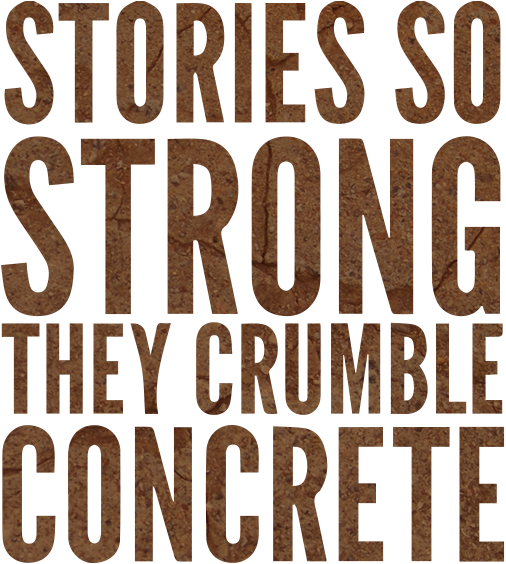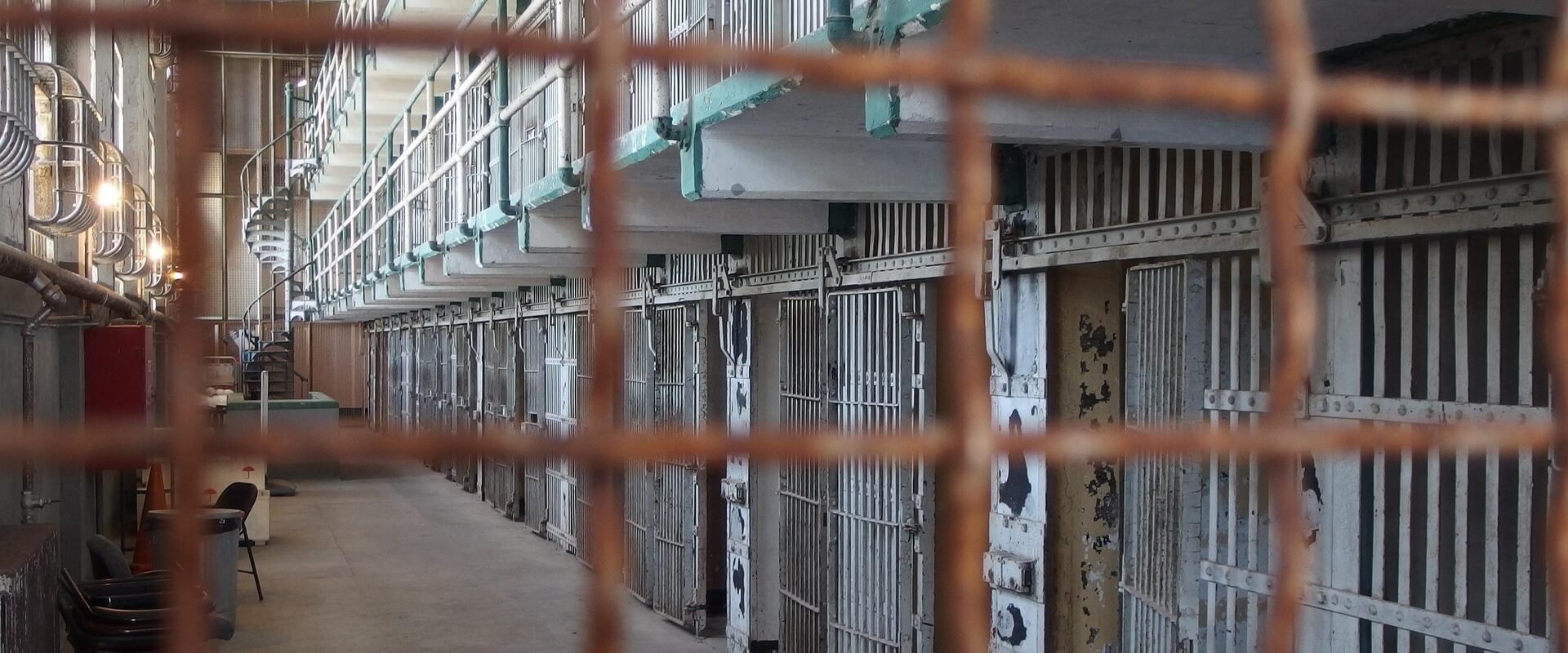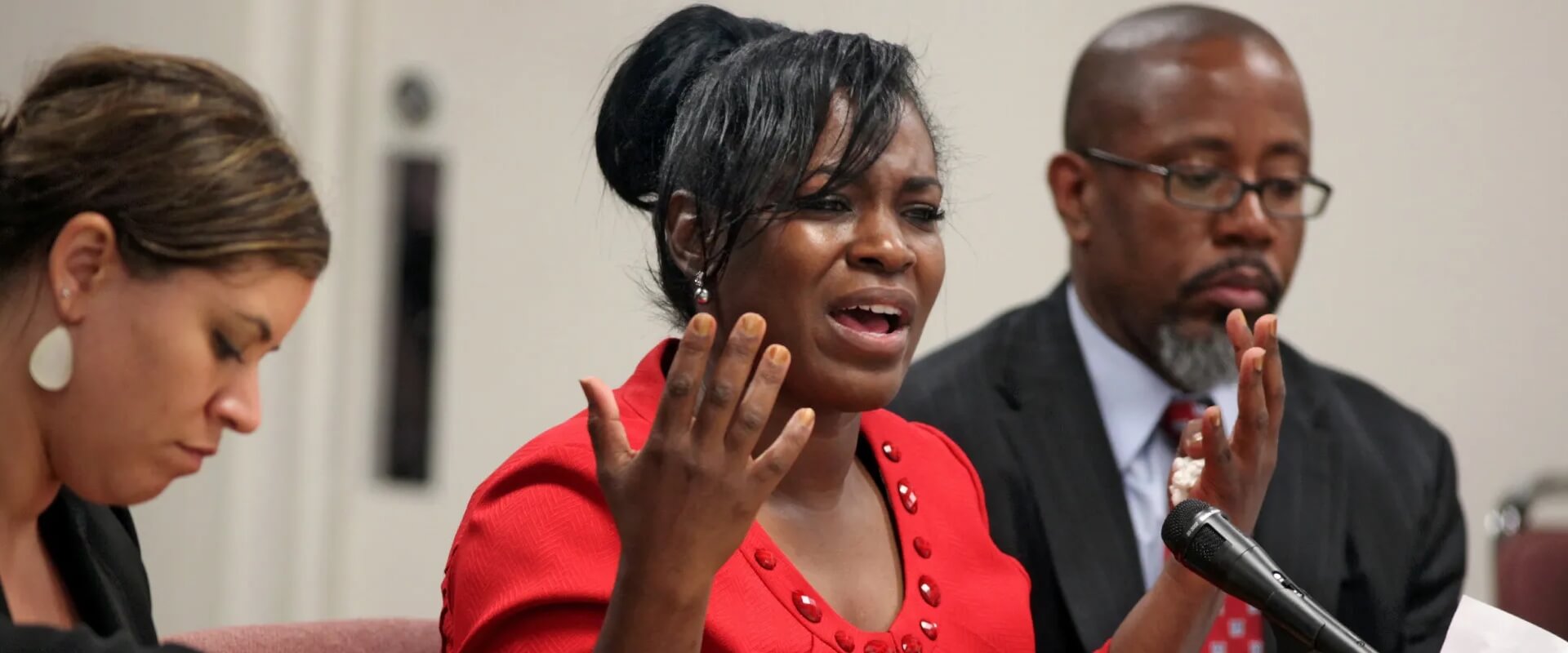Prison Industrial Complex
A lifer, watching another lifer walking away to her housing unit, commented, “She just got a four-year rollover from the Board.” What she meant was that the woman had appeared before the Board of Parole Hearings to be considered for parole. Not only had she been denied a parole date, she has to wait another four years before she comes up for another parole hearing.
The lifer said, “A lot of women are getting multi-year denials. It’s really common now. Some of us lifers are thinking of writing to Governor Schwarzenegger to ask him, if the state is never going to let us out, to commute our life sentences to Death Penalties. We don’t want to live in prison for another 20 years. We’d rather die. At least we’d have a choice.”
Another woman, who has a 30-to-life sentence, is going to turn 55 years old on her next birthday. She says, “If I don’t win my writ, I don’t intend to spend years living in here. I intend to help myself die. I wish I had another choice.”
It is a given in California’s prison industry (California Department of Corrections and Rehabilitation / CDCR) that a life sentence may as well be a life-without-possibility-of-parole term. Whether one gets 15-to-life, 25-to-life, 75-to-life plus “enhancements” of 20 years or more, it’s all the same. The odds in favor of a grant of release, before one has fermented for two times the number in the “——-to-life” judgment in the state’s “Injustice Stew”, are virtually nil.
It doesn’t matter who is elected governor or what political party prevails in the State Assembly or in the Senate. “Tough on Crime” and “Three Strikes (even for shoplifting) Means Life” attitudes have a near-genetic grip on the psyches of all elected officials and the general population of the state.
To win freedom, a prisoner must find some way to go to court, usually with the aid of a volunteer attorney from such groups as Justice Denied or an Innocence Project. Few prisoners have any money for a lawyer or the education to represent themselves. Courts rarely rule in a prisoner’s favor. Well over 95% of appeals or Writs of Habeas Corpus brought by prisoners are denied.
Schwarzenegger has allowed a few people out of prison after a court has ruled in their favor when they’ve appealed a parole board denial. Gray Davis, former Democratic governor, was so enthralled by the generous donations to his campaign for governor from the powerful prison guards’ union (California Correctional Peace Officers Association / CCPOA), he declared, “no one convicted of murder would get out of prison while he was in office.” He kept his word. There is no redemption in a California governor’s type of Christianity, at least for prisoners.
Prisoners must go before the Board of Parole Hearings (BPH) to plead for a release date. The Board’s former title, the Board of Prison Terms, changed on July 1, 2005, was far more apt. Prison terms is what the Board is all about. It is composed entirely of victims rights groups and former prison industry and law enforcement personnel. Crime victims’ relatives populate the victims’ right groups. They cannot be objective. This makes sense. Who could be? Most relatives of crime victims are incapable of forgiveness and it should not be expected of them. They are already allowed to appear before the BPH and to argue against release considerations for their targeted prisoners. However, because they cannot forgive, they should not be members of the BPH. But they are.
Despite a large amount of press attention to reformation policies in the California prison industry, only a tiny fraction of television segments about prison reform that provide the culture’s predominant persuasive pressure on the public have ever been broadcast. There’s no political capital or advertising money in compassion for prisoners. Dehumanization, ridicule and fear mongering are the qualities that rate the pots of gold. Lip service for prison reform is nice, but in a political system dominated by corporate lobbyists and monopolized media, it’s not cool.
Generally speaking, most lifers are never going to get out of prison and captivity costs the state billions of taxpayer dollars per year. As long as the War on Drugs persists, arrests won’t decline. The prison industry will grow and grow and cost more and more. Sentences will get longer and longer and releases fewer and farther between denials. Elected political officeholders will never have the courage to reform a cruel system because it guarantees reelection. It must be mentioned that they are all very afraid of the prison guards’ uber union and its power as well. A terrified public will never condone widespread accommodation of former felons in their communities. Therefore, here is a modest proposal that some inmates dreamed up to help reform the prison industry that Californians may accept.
In California, the average prisoner costs $34,000 per year to maintain WITHOUT rehabilitative, humane medical and dental, or less-than-overcrowded housing programs. As lifers and LWOPs (Life With Out Parole) age, they become decrepit and disabled and cost taxpayers EVEN MORE. After much thought and creative riffing, a number of prisoner-inspired possibilities emerged that will end inmates’ lifestyles of incarcerated despair while earning income for prisoners’ families and the state. The potential for lucrative entertainment franchises are huge as well.
People who are convicted as lifers and LWOPs have committed dangerous crimes, usually concluding with a victim’s death. A prisoner in the CDCR / CCPOA / BPH realm is forever the being she was at the moment of the act(s) for which she was convicted or pled guilty. A prisoner is always dangerous.
Therefore, a prisoner hunt offers superb opportunities for sport, entertainment and money-raising for the state and its citizens while it promises a quick, relatively painless death for the prisoner prey. No faulty anesthetic procedures or wimpy anesthesiologists fearful they might have to intervene in an execution “gone wrong”. All there is to it is a clean bullet through the brain from a high-powered rifle, thank you!
The state can charge at least $1,000,000 per hunt. Another prospect, once the sport has caught on, is a bidding procedure. The highest bid wins the hunt. The price could rise well beyond $1,000,000. Obviously this is a sport that can be undertaken only by the very rich. However, lobbying groups, such as the National Rifle Association or Focus on the Family might hold fund-raising contests for which the winning prize could be - voila! - a prisoner hunt. These groups could rake in millions.
The majority of the hunt fee will go to the state to augment the prison budget. However, the prey could earn a specific small percentage to be willed either to loved ones or the prisoner’s chosen charity.
Prey are selected on a volunteer-only basis. A mechanism must be devised to prevent any prisoner being forced or intimidated into “volunteering against her will”. No wheelchair-bound prisoners may apply. Volunteers with minor disabilities may be acceptable if they don’t impair movement. A prisoner is ineligible for the hunt if she is disabled or ill.
Policies that prepare volunteer prey for the hunt should be instituted to insure the most exciting contest. Health screening, better diet, and exercise programs would prepare the prey for a topnotch performance.
Threshold criteria should be developed to choose appropriate volunteers: 1. BPH rollover for a certain amount of years after several release denials 2. Four outright denials 3. More than one parole board refusal by the governor; perhaps after the second refusal following a BPH grant of release 4. In the case of a sentence longer than25-to-life; for instance, let’s say 32-to-life is the sentence and the first BPH appearance results in the denial of parole 5. Exhaustion of appeals leading to no hope of release 6. * * The HUNTER must be a CRACK SHOT * *
Recently, for the first time in nearly four decades, it has been suggested that prisoners be used as subjects for drug tests by multinational pharmaceutical corporations. Although a prisoner would be remunerated for voluntary participation in such tests, even positing this idea leads one to the conclusion that, not only does the system of imprisonment dehumanize an inmate, but the entire American culture does as well. Therefore, inmates who volunteer and qualify to participate in the hunt will earn a Certificate of Official Human Being signed by the current governor.
More ideas include: 1. A public contest to name the hunt, e.g. “Survivor: Chowchilla” 2. Television rights to broadcast the hunt live could be sold by CDCR for a massive amount of money 3. Live broadcasts could lead to the development of a television series, e.g. “Stories from the Hunt” a. The prey’s back/story b. The hunter’s back/story c. The prey’s family’s story. “What are they gonna do with the money?” d. the hunter’s family’s back/story. “He always wanted to do something like this.” e. The prey’s guards’ stories f. The guards’ families’ stories . . . and on and on and on . . . 4. A television program could become the catalyst for a major movie or even a movie series. 5. Rights to video games, books, comic books, toys and Halloween costumes.
A course designed for maximum sport with hiding places, lots of foliage, groves of trees and numerous water hazards can add to the thrill. Under no circumstances may the prey be armed or wield arms of any kind. Although highly, even prohibitively, unlikely, the hunt course could include a line, a boundary of some sort, over or beyond which, IF a volunteer prey crosses, she can be freed. The chances of this occurring MUST be negligible, of course.
Several prisoners suggested that Dr. Jack Kevorkian would be an excellent in-prison hunt supervisor. Perhaps he could be extradited to California in order to act in this capacity. Others came up with the idea that, if a lifer or LWOP, after the age of 50 years, is not able to be considered for volunteer prey, the lifer’s bunk may be swapped for a coffin. That way, a lifer will get used to sleeping in one because that’s where she’ll spend eternity as there’s no real bed in her future.
Several prisoners voiced an aversion to being hunted; too traumatic. They thought that they would like to be given the opportunity to sell thir bodies for organ harvest. This would go over big with the anti-stem cell development people, like the President. Again, there could be a bidding procedure for those who are a physiological match with the volunteer organ donor. The volunteer must be Hep C and HIV negative and drug free. During the final 90 days of life, organ donors might, besides improved health care, diet and exercise, receive top-flight body care products in order to prepare superficial body parts for . . . oh . . . skin grafts, tips for nail salons, and hair for wigs, weaves and extensions.
A California lifer’s sentence is like a terminal illness. As time passes, it doesn’t get easier. In fact, as the years go by, it gets worse and worse. Prisoners often view, with amusement, the option of commuting a death sentence to life-without as a step up in human rights terms. It may be a step up for a Death-Penalty-hungry public but not necessarily for a prisoner; not really.
On July 1, 2005, the CDC added the word “rehabilitation” to its title. Still, there’s no rehabilitation for lifers and LWOPs. This makes sense. If they’re never going to get out, why bother?
With a hunt or organ sale, prisoners rehabilitate themselves. They give back to society that they so grievously harmed that they may never walk among law-abiding citizens again. They get a bonus for their families or groups in thir former communities to help those who come after, lending a hand to the next generation. Help prisoners help themselves. Hunt them. Shoot them. Set them free! Sara Jane Olson W94197 506-10-04Low C.C.W.F. P.O.Box 1508 Chowchilla CA 93610-1508




